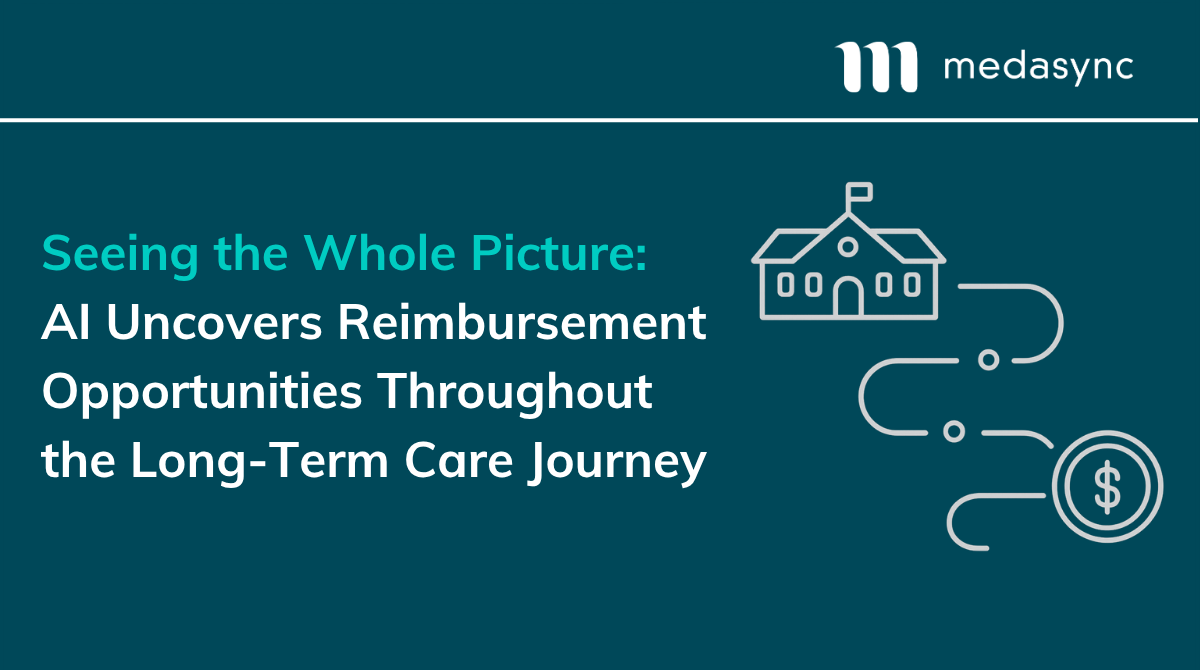Service Charge Capture is Key to Managed Care Revenue Integrity
Every day, you’re providing the patients that come to your SNF care with meaningful services that maintain or improve their quality of life. Your clinical team members are meeting with them, checking on their condition, and providing treatment for many different needs. Those services are important, and more people than just your patients are relying on you to perform them.
But with managed care enrollment now growing to 46% of all 57.7 million eligible Medicare beneficiaries, according to the Medicare Payment Advisory Commission’s (MedPAC), you’re likely experiencing an influx of Medicare Advantage (MA) cases. Additionally, beneficiaries can choose from an average of 32 plans operating in their counties in 2021 each coming with their own unique rules driving reimbursement in the form of a variety of exclusions, carve-outs, and billing levels. It’s a lot to manage!
Your MDS team may already be getting overwhelmed with their current case-load handling the administrative burdens and seeing revenue slip between the cracks. The current staffing environment and resource constraints from the pandemic means there are more MDS nurses being asked to work the floor in addition to their financial/Admin role that critically links the clinical side with the financial side of the business. When resources are strained, everyday tasks like capturing the services and treatments performed for billing are being missed. It’s understandable how it can happen, especially with managed care. More rules, requirements, procedures, and patients demanding care means more opportunity for things to get missed. Nearly everyone can relate to a scenario where your MDS Nurse or case manager isn’t aware that an expensive IV Med had been administered or an exclusionary drug prescribed after admission.
As a result, SNFs are often billing at the incorrect level or missing out on opportunities to proactively request exclusions/carveouts. It’s no surprise that you end up providing level 3 care with all associated costs while only billing at level 1. When your clinical teams are busy caring for patients or dealing with the next new COVID thing, they don’t have time to report services and treatments to billing teams. The result is that numbers don’t line up, and SNFs don’t perform with the financial strength that they should be, opening up the door to many other problems.
Policy Drives a New Payment Equation
When PDPM was introduced, many insurance companies transitioned their RUG based contracts to a PDPM model.. Now, with nearly 2 years of PDPM under our belt and the continued growth of managed care, we are seeing those same insurance carriers move away from PDPM based models. This means more levels and more variety than ever when it comes to how SNF’s are paid by their MCO partners. You need to know these new contracts and the different triggers that correlate to adequate payment for care provided. And, you also, can’t take your focus off state Medicaid and traditional Medicare.
That’s why it’s imperative to focus on what you can do to improve revenue integrity now. Let’s review a few options.
Tips for Improving Revenue Integrity Now
1. Use Technology to Fill the Revenue Gaps
MA has experienced an astounding 44 percent growth over the past five years. This adds complexity and complexity, coupled with manual tasks, leads to mistakes. Mistakes in the form of missed charges mean you’re doing more work than you’re getting paid for. So, you need to be doing all that you can now to improve your success under MA — and accurate service capture is a huge opportunity.
The best way to do that isn’t by implementing a new internal process for your team to remember in addition to everything else they’re doing or paying outside consultants. It’s to use technology. Platforms are available that can help you better capture, translate, and communicate the services you’re providing for billing purposes.
2. Automate As Much As Possible
Remember, you and your teams are human. Complexity presents real challenges for managing the vast amounts of data and tasks that are being generated every day at your location(s). Use technology to automate critical functions that lead to billing opportunities.
For example, should your clinical team perform excluded services that must be billed separately on the UB, how are those being tracked and reported to billing? Should a patient require a treatment that’s not covered under their MA contract, how are you tracking those (and requesting carve-outs to insurance companies)? When a patient’s level of care changes,, how is your team being notified so they can update the MA case manager and advocate for any contractual billing changes? Put technology to work to track patients and alert your team so nothing is missed, and patients receive the proper care.
3. More Effectively Use Your Team
Technology is a powerful tool to support your team. You already have systems in place for managing health records, pharmacies, billing, and more. But are they speaking with one another? At least with traditional Medicare, the MDS centralizes the key information that correlates to delivery and billing. But that isn’t necessarily the case with managed care plans, especially the level-based ones that operate with different service delivery criteria.
Missed communications about services provided will hamper revenue integrity, and having team members waste time digging through emails, multiple software programs, or even paperwork to substantiate treatments, find information, and so on only results in greater administrative costs. Centralization and automation are key to making sure that your team is operating at peak performance.
Give your team a technology solution that centralizes all the data they need to do their jobs well — and automates as much of it as possible. This helps your clinical team provide more effective care, provide it faster, and keep operations and billing teams in the loop — without having to go hunting for information.
The skilled nursing industry is in a constant state of change. The aftermath of the pandemic has presented SNF operators with numerous challenges to grapple with including, lower census, staffing/resource shortages, and COVID regulations. In addition, updates to reimbursement models, the growth of managed care, and an aging population all present challenges that operators must address to ensure their facilities can run efficiently on both the clinical and financial side. It may seem daunting at first glance, but simple yet effective solutions to these obstacles are available in the form of technology.
At MedaSync, proactively solving your revenue cycle challenges is what we do best. We’re in this together, and we’re committed to helping you achieve your goals.





